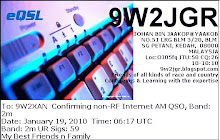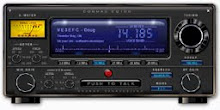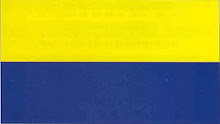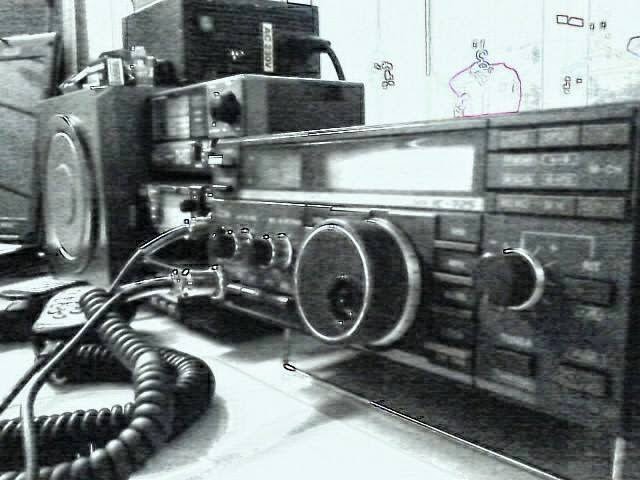
LONDON (AFP) – A "cute" primate so rare it was thought to be extinct has been caught on camera in the forests of Sri Lanka for the first time, scientists said Monday.
The Horton Plains slender loris is a small, nocturnal animal which can grow up to 17 centimetres (six inches) long with big, bulging eyes. Endemic to Sri Lanka, it was first discovered in 1937 but had only been seen four times since then. Scientists last caught a glimpse of the primate in 2002, and believed the elusive animal had since died out. But field researchers, working with the
Zoological Society of London, managed to track down the mysterious creature in the forests of central Sri Lanka. In a world first, they were able to take pictures of an adult male slender loris sitting on a tree branch. The field team was able to capture one of the creatures and give it a physical examination, the first time that has ever been done, before releasing it back into the wild. But experts warned that deforestation in Sri Lanka -- largely blamed on the drive to create tea plantations in the region -- was now the biggest threat to the loris.
Craig Turner, a
conservation biologist at the ZSL, said their natural forest habitat had been divided up for farming and logging use, cutting off the "very cute" animals from their partners.
"The forest has now been fragmented into a series of small islands," Turner told BBC radio.
"They can't move to one another, they can't mate, breed, so it has real implications for the future persistence of the species."

Location : Tapak Menara Kuala Lumpur (KL Tower)
Date : 30 - 1 /08 / 2010
ABOUT AMATEUR RADIO
Amateur radio service is defined in the Communication and Multimedia (Spectrum) Regulations 2000 as a radiocommunications service (covering both terrestrial and satellite) in which a station is used for the purpose of self traning, intercommunication and technical investigations carried out by authorized persons who are interested in radio technique solely with a personal aim and without any pecuniary interest.
AMATEUR RADIO OPERATOR'S CERTIFICATE
Regulation 27(1) of the Communications and Multimedia (Technical Standards) Regulations 2000 states that no person shall undertake or conduct any activity in designated skil area unless that person is certified. Amateur radio operator has been gazetted as a designated skill area category under the regulation, hence to operate an amateur radio station a person needs to have an appropriate proficiency and skill i.e. certified in this area.
INTERFERENCE
Please ensure that the radio transmision does not cause interference to any other radio services. Regulation 15(1) of the Communications and Multemedia (Technical Standards) Regulations 2000 states that no person shall intentionally design, install, operate, maintain or modify any communications equipment in a manner is likely to cause interference with, impairment, mulfunction of, or harm to any communications equipment or any other equipment.
Regulation 15(2) of the regulation denotes that a person who contravenes this regulation commits an offence and shall, on conviction, be liable to a fine not exceeding three hundred thousand ringgit (RM 300,000.00) or to imprisonment for a term of not exceeding three years or to both.
To eliminate the potential of interferences, the following procedures must be followed strictly:-
a) Ensure that suffient equipment, tools and test gear is available and can used to monitor and verify that your transmission does not cause any interference to other radio services.
b) You must responsible if your amateur radio is found to be the caused of interference. Immediate remedy action must be taken to rectify the problems in case of interference.
c) Ensure that the transmission do not exceed the level of over deviation.
d) Ensure that the radiated energy is always within the narrowest posible frequency bands for any class of emission in use.
e) The radiation of harmonics and spurious emissions should be suppressed to minimize interference.
Historical Description of Amateur Radio: From the Encyclopedia Britannica:-
Interest in amateur radio arose around the turn of the century, shortly after the Italian inventor Guglielmo Marconi successfully sent the first transatlantic wireless signal in 1901. The interference of amateur broadcasts with commercial and military transmissions led to the institution of government control in 1911. After World War I, amateurs became active in radio experimentation, contributing to developments in long-distance broadcasting and becoming the first radio operators successfully to exploit the upper medium-frequency and lower high-frequency radio bands. Over the years, amateur radio operators have also provided emergency communications during forest fires, floods, hurricanes, and other disasters. They serve as an important link between stricken communities and the outside world until normal communications are reestablished.Amateur radio operators in the United States are subject to international and federal regulations. There are five classes of licenses. Competence in the use of the International Morse Code and a knowledge of radio theory and regulation are required to obtain the advanced-level licenses. Amateur radio is allocated frequencies at the extreme high-frequency end of the medium-wave band, five groups of frequencies in the shortwave band, two groups in the veryhigh-frequency band, three in the ultrahigh-frequency band, and seven in the superhigh-frequency band for telegraphic and telephonic communication using amplitude and frequency modulation. There are restrictions on the power of the transmitters, and certain of the frequencies must be shared with due regard for the needs of other users.
 LONDON (AFP) – A "cute" primate so rare it was thought to be extinct has been caught on camera in the forests of Sri Lanka for the first time, scientists said Monday.
LONDON (AFP) – A "cute" primate so rare it was thought to be extinct has been caught on camera in the forests of Sri Lanka for the first time, scientists said Monday.













































